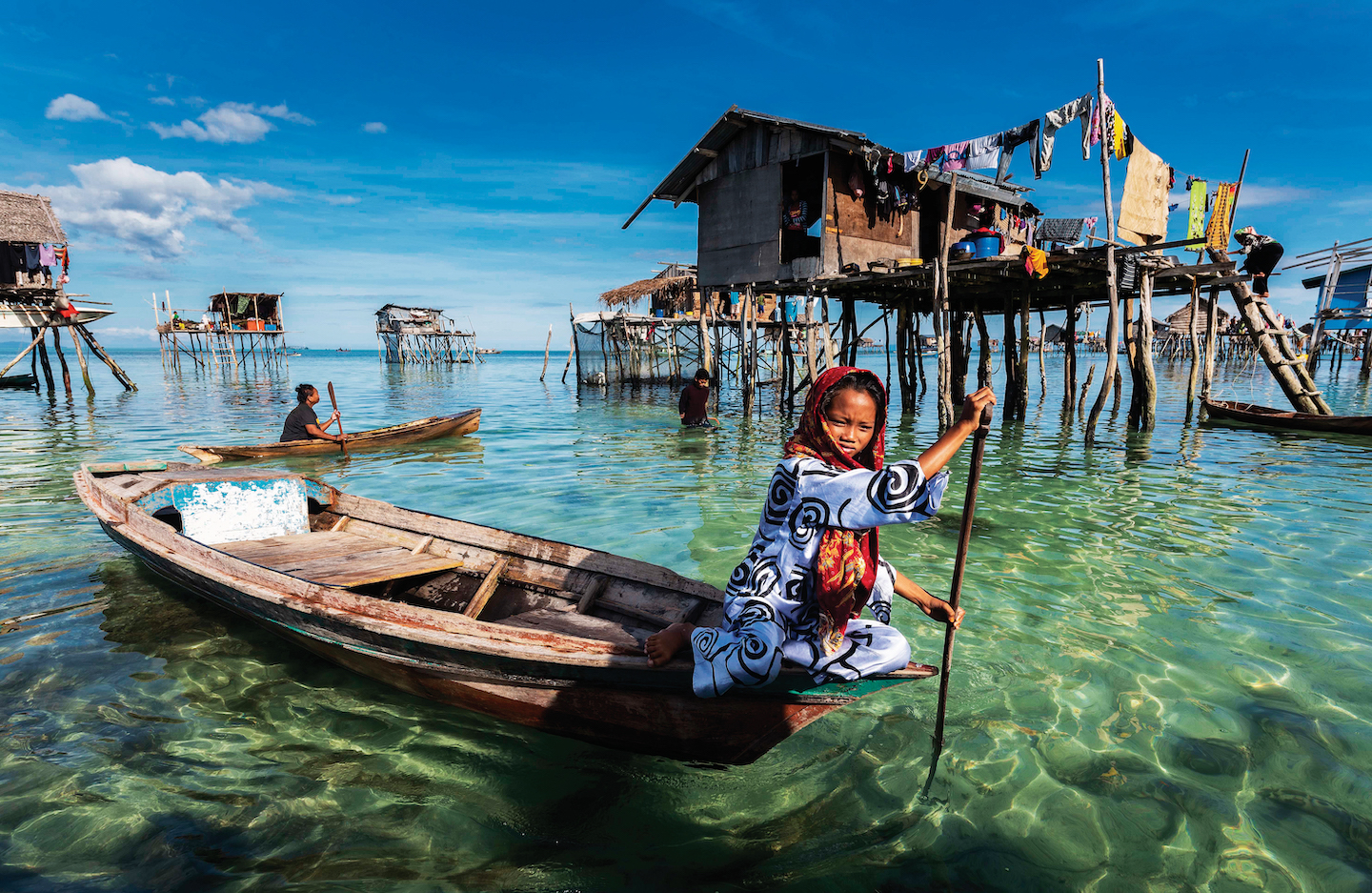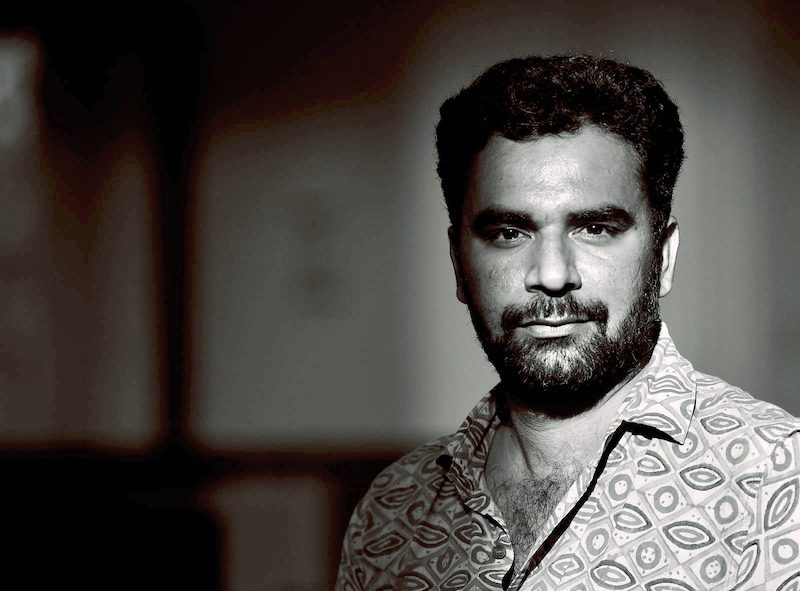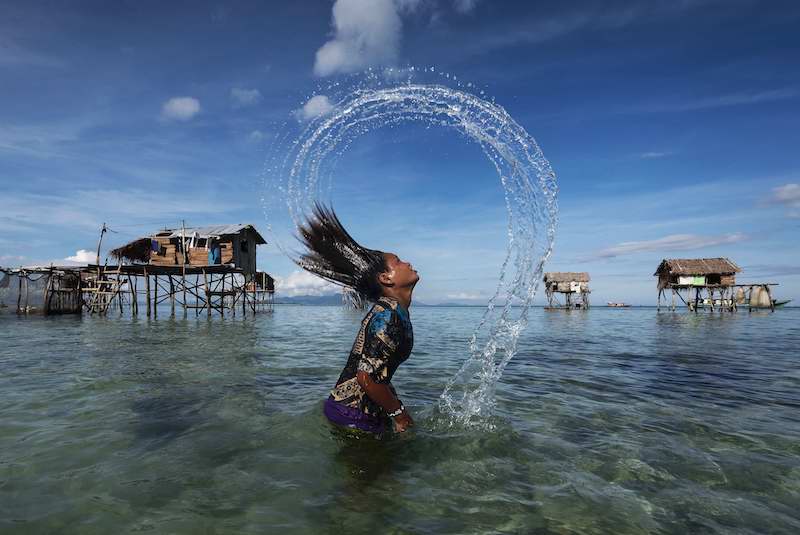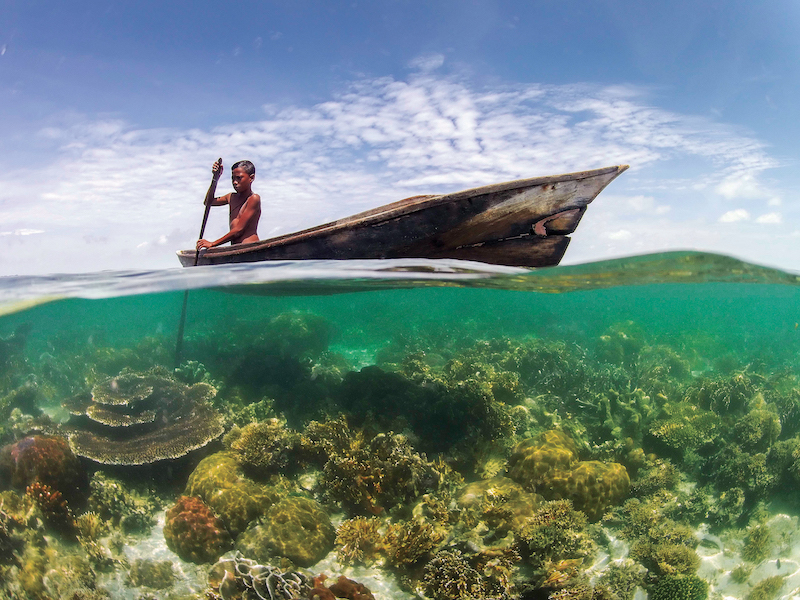
The show will visitors a visual insight into the sea-based lives of the community (All photos: A Prathap)
The Bajau Laut are a seafaring people who live in the Sulu archipelago between Malaysia, the Philippines and Indonesia, otherwise known as the Coral Triangle. They are stateless, have no citizenship and do not use many of the technological advancements that land lovers do. Living in wooden houseboats or stilt huts, the community comprises a population of about 3,500 people. They use the sun to keep track of time, do not go to school, have no idea of their age, and do not even know how long their people have been around. Although some of us might have read about the Bajau Laut, actually seeing how they live by the cerulean blue waters is a completely different matter. Seeing, after all, is believing.
A Prathap’s latest photography exhibition, The Bajau Laut of North Borneo, at Sutra Gallery from May 20, will give visitors a visual insight into the sea-based lives of the community. “The Bajau Laut community that I have studied and photographed live off the coast of North Borneo. The sea has always been an integral part of their lives and even their houses are built right in the water. The community follows a seafaring lifestyle throughout their lives, rarely setting foot on land. Very few traditional communities in the world can boast of a more profound connection with the ocean than these nomadic people,” he says.
a_prathap_2.jpg

What started as a hobby with a few choice clicks slowly evolved into Prathap’s profession. With over 18 years of experience as a professional photographer, he “documents life for posterity in all its myriad situations”. Currently a special photographer with The Times of India in Chennai, Prathap has been exhibiting his work since 2012 in India and Malaysia. Having collaborated with Sutra Foundation on many occasions, he notes that this current series of photographs is rare, as dance is not at its centre.
As a photojournalist, Prathap has documented a wide array of subjects, from powerful personalities and landmark events to graceful performances. “I can freeze the moment, which keeps changing every second; what you see will not be there the next minute. I have travelled extensively and covered a wide range of subjects of national and international issues. Last month when I was in Colombo covering the Sri Lankan economic crisis, I had to miss the book launch of The Kumbh Mela Prayagraj, Joined In Dance: A Malaysia-India Experience, for which I was a contributing photographer. As a journalist, you don’t know where and when you will be called. One is duty-bound and must be ready to work round the clock,” he explains.
Upon seeing pictures of the Bajau Laut people online, Prathap was instantly intrigued. As he had always wanted to document indigenous tribes, it was no surprise that he dove headfirst into research. “From then on, I started to read more about them. I should mention Arif Kaser, a Malaysia-based photographer, who gave me the initial contact of Muslianshah Masrie, who is in Tawau. The latter organised photo trips to Sabah/Sarawak. I must also mention Associate Prof Dr Hanafi Hussin, who helped with details about the Bajau Laut community. Without their help, I would not have been able to travel to experience and document [the community],” he says.
euphoric_moment_ii.jpg

Capturing the daily life of the Bajau Laut people turned out to be a novel experience. With most subjects, he was able to recce locations ahead of time. “When photographing dancers in a posed shoot, you have some control over the lighting and how the dance is choreographed, there is a certain amount of predictability in the creative process, and one may be able to direct what and how the composition is to be secured. However, this is not be possible during live shows. When photographing daily life, one captures what one sees.”
“But during my travels to the islands of Selakan, Bohey Dulang, Tatagan, Omadal and Maiga to document the sea gypsies, it was a completely different situation. I started shooting pictures even before I got off the boat at Selakan Island. I ended up shooting a different frame every single moment I spent there. In order to get an idea of what to expect, I had browsed through a whole series of photographs before going there, in reality, things were completely different from what I had expected,” Prathap adds.
This new experience did not deter the photographer’s zeal in the slightest. “For me, every assignment is a new beginning. I would like to quote Avvaiyar, a Tamil poet: ‘Katrathu kaialavu kallathathu ulagalavu’, which means ‘what one knows is only a handful, whereas the unknown is the size of the world’,” he says.
Travelling to Sabah and Sarawak in 2018 and 2019 to document the nomadic sea people, Prathap learnt so much about their way of life. “The Bajau Laut have their own language (Bajau language/Sama Bajau) and rarely communicate with outsiders. The women smear burak, a paste made of pounded rice, spices and seaweed, on their faces to protect their skin from the sun caused by the reflection of the sea. Most of the children have bleached golden hair as they are exposed to the sea and sun for long periods,” he recalls.
a_point_of_balance_i.jpg

What is unique about The Bajau Laut of North Borneo is that it is the first exhibition to focus solely on the lives of this community. There are 20 photographs, each representing just a slice of nomadic life at sea, and Prathap uses a range of techniques to bring the images to life. “All the photographs are close to my heart but if you want me to name one, then it’s A Point of Balance, as it was the first picture I shot using an underwater camera with a dome port to get split shots (half underwater and half above water). To get a few good [split shots], you have to try multiple times. Luckily I managed to do so with a few clicks.”
The pandemic may have cut short Prathap’s earlier trip through North Borneo, and even delayed this exhibition, but he is determined to revisit and continue his research this year. In future, he hopes to present The Bajau Laut of North Borneo in Chennai as well. “During my last visit, I was unable to get a few shots due to unfavourable weather conditions. For example, I wanted to shoot some corals from above the water together with the Bajau children in a boat. This image is only possible during low tide. I also thought that it would be good to try some aerial shots from a drone. My next exhibition on the Bajau Laut would depend on the response to this exhibition, but I shall endeavour to continue documenting them.”
The Bajau Laut of North Borneo will run until June 10 at Sutra Gallery, Kuala Lumpur. For more information, see here.
This article first appeared on May 16, 2022 in The Edge Malaysia.


